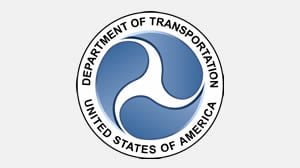RSS feed source: Federal Emergency Management Agency
ST. LOUIS – If you have applied for help after recent disasters in Missouri, stay in touch with FEMA and the U.S. Small Business Administration about your on-going recovery needs.
Helpful Tips:
Read your letter from FEMA carefully.Provide contractor estimates for disaster-related repairs.Must include the contractor’s contact information.When contacting FEMA, provide your nine-digit FEMA registration ID number.Keep receipts for disaster-related purchases (items to make repairs to home, hotel receipts, etc.).Contact FEMA if your current housing situation, phone number, or mailing address have changed.
You can stay in touch with FEMA by visiting DisasterAssistance.gov, calling the FEMA Helpline at 1-800-621-3362, or visiting a Disaster Recovery Center.
Visit a Disaster Recovery CenterLOCATIONSHOURS OF OPERATIONUnion Tabernacle M.B. Church
626 N. Newstead Ave.
St. Louis, MO 63108Monday-Friday: 8 a.m.-7 p.m.
Saturday: 9 a.m.-4 p.m.
Sunday: ClosedUrban League Entrepreneurship and
Women’s Business Center
4401 Natural Bridge Ave.
St. Louis, MO 63115Monday-Friday: 8 a.m.-7 p.m.
Saturday: 9 a.m.-4 p.m.
Sunday: ClosedSumner High School — Parking Lot
4248 Cottage Ave.
St. Louis, MO 63113Monday-Friday: 8 a.m.-7 p.m.
Saturday: 9 a.m.-4 p.m.
Sunday: ClosedSt. Louis County Library
Mid-County Branch
7821 Maryland Ave.
Clayton, MO 63105Tuesday-Thursday: 8 a.m.-7 p.m.
Closing Permanently: Thursday, July 24St. Louis County Library
Prairie Commons Branch
915 Utz Ln.
Hazelwood, MO 63042Tuesday-Thursday: 8 a.m.-7 p.m.
Closing Permanently: Thursday, July 24U.S. Small Business Administration (SBA) Centers
If you do not qualify for FEMA assistance, or to supplement FEMA assistance, a disaster loan from the SBA may be available. SBA’s Business Recovery Centers and Disaster Loan Outreach Centers serve as a one-stop shop for disaster assistance.
Click this link to continue reading the article on the source website.


